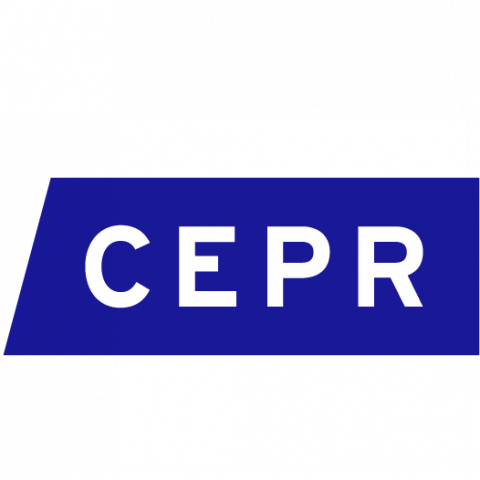
Conflict in Colombia, fueled by coca production, negatively impacted social cohesion, particularly in areas where militias dressed as civilians and where violence was intense
Conflicts have devastating effects on economic development. Each year, approximately 10%
of global GDP is spent on addressing and containing violence (IEP 2019). In addition to their direct costs on society through the destruction of physical and human capital, conflicts can also lead to social disintegration (Collier et al. 2009, Rohner et al. 2013b).
Conflicts are more likely to occur in developing countries where, in the absence of strong institutions, social capital – measured by trust, participation in community organisations, and cooperation – is crucial for economic development. Indeed, a growing number of studies show that social capital not only provides support in adverse situations, but also guarantees a more efficient provision of public goods, and better outcomes in terms of fiscal capacity, governance, trade, and knowledge diffusion.
However, the effects of conflict-related violence on social capital have been described as "the least understood of all war impacts" (Bauer et al. 2016), and existing evidence is mixed. Some studies document that the exposure to violence undermines trust, (Rohner et al. 2013a, Cassar et al. 2013), while it has also been shown that violence enhances local cooperation (Bellows and Miguel 2009, Voors et al. 2012, Bauer et al. 2016). Why there are instances of negative and positive effects of violence on social capital remains a puzzle.
Conflict in Colombia is financed by coca production
To shed light on this debate, I study the Colombian conflict. In Colombia, armed groups largely finance their fighting with coca production. For this reason, they depend on external shocks in Peru and Bolivia – the other two producers of coca leaves in the world (UNODC 2009). Thus, the eradication efforts in these countries affect the demand for coca in Colombia, and in turn, the incentives for armed groups to control areas with the potential to grow coca (Dube and Vargas 2013). These municipalities are identified by using satellite images of the ecological conditions for growing coca.
How did conflict affect social capital in Colombia?
My results indicate that the effect of conflict on social capital depends on the ability of the communities to identify the perpetrators.
The Colombian conflict dates back to the 1960s and involved three illegal armed groups that competed for control of villages, natural resources, and strategic corridors of illegal markets. These non-state armed groups reigned over most of the territory. Two groups are left-wing guerrillas (FARC and ELN) and rally under the banner of resistance against the state, advocating for poor farmers and land inequality (Richani 1997). A third actor, the right-wing paramilitary group (AUC) articulates a discourse aligned with the protection of the interests of elite landowners, offering defense against guerrilla attacks, and maintaining a semblance of “public-order.” Both sides were financed by lucrative drug trafficking and both sides have been responsible for human rights violations, showing that across armed group factions, grievances rooted in socio-political arguments are hard to separate from greed motives (Suarez 2000). Cocaine production and trafficking not only facilitate the materialisation of these grievances, but also enable enormous profits. In the late 1990s and 2000s, much of the fighting between guerrillas and paramilitary forces was for control over coca plantations and trafficking routes for cocaine (Bagley 2012).
Civilians were often accused of aiding enemy groups and were targeted and persecuted as a deliberate strategy of war (Morales 2018). Due to rumours, false denouncements, and finger-pointing, people developed mechanisms of protection such as silence, distrust, and isolation from their community, and generally adopted a "low profile" strategy so as to be less visible to armed groups (Centro de Memoria Historica 2013, de Memoria Historica 2011). Similarly, prominent community members were victimised for being the spokespersons for collective claims.
My research shows that conflict has a negative effect on social cohesion measures such as trust, participation in community organisations, and cooperation. The magnitude of the effect is relatively large; taking the variable of whether people trust in other members of the community as an example, this corresponds to the difference in trust levels between Germany and Colombia.
Which characteristics of conflict shape the impacts on trust?
I find that the impact of violence on social capital depends on two factors: i) the possibility of identifying the enemy, and ii) the intensity of the violence. With regard to the former, the ability to distinguish the enemy affects the certainty of whom people can trust. In municipalities in which violent attacks were perpetrated by difficult to discern militias, the effect is larger than when armed groups were clearly identifiable. Indeed, militias do not wear uniforms, bracelets with group insignias, flags, or carry visible guns, and tend to mostly dress like the civilian population.
In terms of violence intensity, very high levels of violence can be so disruptive that communities are unable to react, unlike for low levels of violence where the possibility of organising to fight a common threat is greater. A failure to account for these two factors provides a tenable explanation for the mixed results found by different scholars. I document that the intensity of the exposure to violence is an important determinant of its impact on social capital. Low exposure to violence fosters social capital, possibly because local cooperation serves as a strategy to confront external threats. However, as violence becomes increasingly severe, social capital is negatively affected.
My estimates imply that individuals living in a Colombian municipality with the same level of violence as in the US become more involved with their communities when experiencing violence, arguably a way of reacting in difficult times. This contrasts with an observed decrease in social capital in municipalities that have experienced levels of violence similar to Brazil or Mexico.
Key takeaways for post-conflict policy
These results help to better understand the seemingly contradictory outcomes presented
in previous research. For instance, in the conflict in Sierra Leone, the pitting of one ethnicity against another actually generated positive developments in collective action, while in Uganda, violence decreased trust towards members from other ethnicities. In addition, for half of the conflicts around the world, making such a distinction is not possible as there is no polarisation in terms of religious, regional, or ethnic divisions (Fearon and Laitin 2003). Instead, like in the case of Colombia, armed groups wore civilian clothes to try to blend with the local population (Centro de Memoria Historica 2013). Dressing like civilians allowed them to gather information on possible collaborators of enemy armed groups and it was therefore not always possible to identify potential perpetrators. There are numerous examples of this "not readily identifiable" aspect of the conflict. Many victims later on reported that their perpetrators belonged to their community, reflecting the fact that a large part of the conflict took place within communities and that groups lived together (Centro de Memoria Historica 2013).
From a policy perspective, my results highlight that it is not only physical and human capital that must be restabilised in the aftermath of conflict, but also social capital. In addition, enforcing International Humanitarian Laws concerning the distinction between combatants and civilians is essential to hold armed groups responsible for war crimes.
References
Bagley, B (2012), Drug Trafficking and Organized Crime in the Americas.
Bauer, M, C Blattman, J Chytilova, J Henrich, E Miguel, and T Mitts (2016), "Can War Foster Cooperation?", Journal of Economic Perspectives, 30(3): 249–74.
Bellows, J and E Miguel (2009), "War and local collective action in Sierra Leone", Journal of Public Economics, 93(11-12): 1144–1157.
Cassar, A, P Grosjean, and S Whitt (2013), "Legacies of Violence: Trust and Market Development", Journal of Economic Growth, 18(3): 285–318.
Centro de Memoria Historica (2013), Basta Ya. Informe General, Departamento Nacional de Planeación.
Collier, P, A Hoeffler, and D Rohner (2009), "Beyond Greed and Grievance: Feasibility and Civil War", Oxford Economic Papers, 61(1): 1.
Dube, O and J Vargas (2013), "Commodity Price Shocks and Civil Conflict: Evidence from Colombia", Review of Economic Studies, 80(4): 1384–1421.
Fearon, J D and D D Laitin (2003), "Ethnicity, Insurgency, and Civil War", The American Political Science Review, 97(1): 75–90.
IEP (2019), Global Peace Index, Institute for Economics and Peace.
Morales, J S (2018), "The impact of internal displacement on destination communities: Evidence from the Colombian conflict", Journal of Development Economics, 131: 132–150.
Richani, N (1997), "The Political Economy of Violence: The War-System in Colombia", Journal of Interamerican Studies and World Affairs, 39(2): 37–81.
Rohner, D, M Thoenig, and F Zilibotti (2013a), "Seeds of distrust: conflict in Uganda", Journal of Economic Growth, 18(3): 217–252.
Rohner, D, M Thoenig, and F Zilibotti (2013b), "War Signals: A Theory of Trade, Trust, and Conflict", The Review of Economic Studies, 80(3): 1114.
Suarez, A Rangel (2000), "Parasites and Predators: Guerrillas and the Insurrection Economy of Colombia", Journal of International Affairs, 53(2): 577–601.
UNODC (2009), World Drug Report, United Nations Office on Drugs and Crime.
Voors, M J, E E M Nillesen, P Verwimp, E H Bulte, R Lensink, and D P Van Soest (2012), "Violent Conflict and Behavior: A Field Experiment in Burundi", American Economic Review, 102(2): 941–64.

